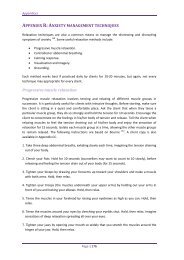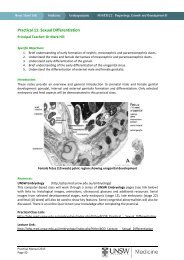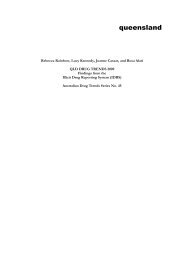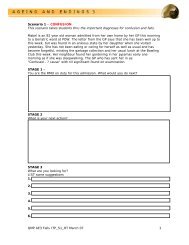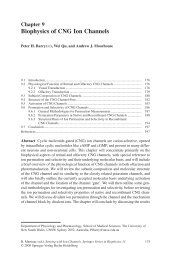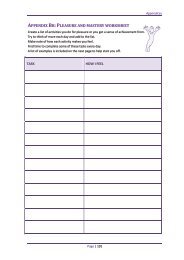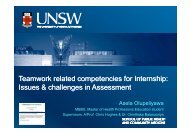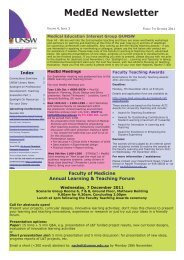appendix d: motivational interviewing - National Drug and Alcohol ...
appendix d: motivational interviewing - National Drug and Alcohol ...
appendix d: motivational interviewing - National Drug and Alcohol ...
You also want an ePaper? Increase the reach of your titles
YUMPU automatically turns print PDFs into web optimized ePapers that Google loves.
Appendices<br />
• Express optimism about change.<br />
• Express intent to change.<br />
These strategies include:<br />
Typical day<br />
Often a client deems certain aspects of his/her life irrelevant to treatment or they are<br />
insignificant to the client <strong>and</strong> overlooked <strong>and</strong> therefore not disclosed during therapy. However,<br />
knowing these things can help a worker engage with the client. It can also provide a more<br />
holistic view of the person as well as invaluable information concerning daily habits, significant<br />
environments, important relationships <strong>and</strong> people in the client’s life. Furthermore, this can<br />
highlight to the client aspects of his/her life that he/she had not been aware of (e.g., “I hadn’t<br />
realised I was drinking that much”).<br />
In order to attain this information it can be useful to ask the client to explain how he/she spends<br />
an average day. Encourage the client to pick an actual day (e.g., last Wednesday) rather than<br />
what they do “most days”.<br />
Allow the person to continue with as little interruption as possible. If necessary, prompt with<br />
open-ended questions (e.g., “What happened then?” or “How did you feel?”). Review <strong>and</strong><br />
summarise back to the client after he/she has finished, <strong>and</strong> clarify that you have summarised<br />
accurately.<br />
Once you have a reasonably clear picture of how the client’s use (<strong>and</strong> any co-occurring mental<br />
health symptoms) fits into a typical day <strong>and</strong> any current concerns, ask the client’s permission to<br />
provide feedback from your assessment (e.g., “I’m getting a feel for what’s going on in your<br />
everyday life at the moment, you’ve mentioned several things that are concerning you”).<br />
Summarise these problem areas briefly, using those issues raised by the client in the “typical<br />
day” discussion (e.g., quality of life, health, mood, drug use).<br />
Decisional balance (good <strong>and</strong> not so good aspects)<br />
This technique involves a conscious weighing up of the pros <strong>and</strong> cons of certain behaviours (e.g.,<br />
drug use). Clients are often aware of the negative aspects involved in certain behaviours but<br />
have never consciously assessed them. The decisional balance is a frequently used <strong>motivational</strong><br />
strategy, particularly when clients are displaying ambivalence regarding their substance use <strong>and</strong><br />
for when you want to determine their stage of change in regard to their substance use.<br />
Begin by asking questions like:<br />
• “What do you like about your use of …?”<br />
• “Tell me about your drug use. What do you like about it? What’s positive about<br />
using for you?”<br />
Page | 145



